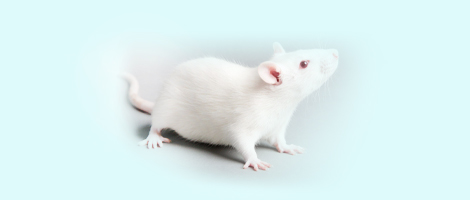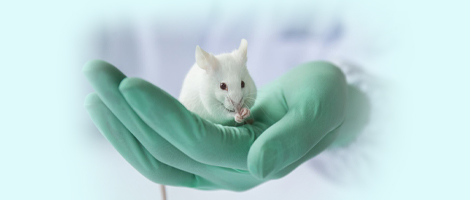| [1] |
王欣, 谢智慧, 梁国标, 等. 高压氧对大鼠肾移植后缺血再灌注肾组织中Th17细胞和单核巨噬细胞标志物表达的影响[J]. 国际泌尿系统杂志, 2020(5):875-880. DOI: 10.3760/cma.j.cn431460-20190613-00029 .
|
|
WANG X, XIE Z H, LIANG G B, et al. Effect of hyperbaric oxygenation on expression of Th17 cell and monocyte macrophage markers of rat in renal tissue after renal transplantation ischemia reperfusion[J]. Int J Urol Nephrol, 2020(5):875-880. DOI: 10.3760/cma.j.cn431460-20190613-0 0029 .
|
| [2] |
潘梓文, 张伟杰, 赵大强. 小鼠移植肾再次移植动物模型的建立[J]. 中华实验外科杂志, 2022, 39(1):169-172. DOI:10.3760/cma.j.cn421213-20210916-00724 .
|
|
PAN Z W, ZHANG W J, ZHAO D Q. Technique for mouse kidney graft re-transplantation[J]. Chin J Exp Surg, 2022, 39(1):169-172. DOI:10.3760/cma.j.cn421213-20210916-00724 .
|
| [3] |
LUNNEY J K, VAN GOOR A, WALKER K E, et al. Importance of the pig as a human biomedical model[J]. Sci Transl Med, 2021, 13(621): eabd5758. DOI:10.1126/scitranslmed.abd5758 .
|
| [4] |
MARINO C L, LASCELLES B D X, VADEN S L, et al. Prevalence and classification of chronic kidney disease in cats randomly selected from four age groups and in cats recruited for degenerative joint disease studies[J]. J Feline Med Surg, 2014, 16(6):465-472. DOI:10.1177/1098612X13511446 .
|
| [5] |
ALMEIDA MOREIRA LEGATTI S, DIB R EL, LEGATTI E, et al. Acute kidney injury in cats and dogs: a proportional meta-analysis of case series studies[J]. PLoS One, 2018, 13(1): e0190772. DOI:10.1371/journal.pone.0190772 .
|
| [6] |
CHEN H M, XU K X, YAN C, et al. A chromosome-scale reference genome of the Banna miniature inbred pig[J]. Sci Data, 2024, 11(1):1345. DOI:10.1038/s41597-024-04201-3 .
|
| [7] |
CHEN H M, ZHAO H, ZHU Q Y, et al. Genomic consequences of intensive inbreeding in miniature inbred pigs[J]. BMC Genomics, 2025, 26(1):154. DOI:10.1186/s12864-025-11333-2 .
|
| [8] |
SCHÖNEMANN C, LACHMANN N, KIESEWETTER H, et al. Flow cytometric detection of complement-activating HLA antibodies[J]. Cytometry B Clin Cytom, 2004, 62(1):39-45. DOI:10.1002/cyto.b.20027 .
|
| [9] |
VERNOOIJ R W M, LAW W, PETERS S A E, et al. The probability of receiving a kidney transplantation in end-stage kidney disease patients who are treated with haemodia-filtration or haemodialysis: a pooled individual participant data from four randomised controlled trials[J]. BMC Nephrol, 2021, 22(1):70. DOI:10.1186/s12882-021-02265-6 .
|
| [10] |
BURGAN C M, SUMMERLIN D, LOCKHART M E. Renal transplantation: pretransplant workup, surgical techniques, and surgical anatomy[J]. Radiol Clin North Am, 2023, 61(5):797-808. DOI:10.1016/j.rcl.2023.04.003 .
|
| [11] |
王雅娟, 范淑玉, 卢晓雪. 彩色多普勒超声对移植肾动脉狭窄的临床应用价值[J]. 河南医学研究, 2023, 32(23): 4262-4266. DOI:10.3969/j.issn.1004-437X.2023.23.009 .
|
|
WANG Y J, FAN S Y, LU X X. Clinical application value of color doppler ultrasound in transplanted renal artery stenosis[J]. HENAN Med Res, 2023, 32(23): 4262-4266. DOI:10.3969/j.issn.1004-437X.2023.23.009 .
|
| [12] |
中华医学会器官移植学分会,中国医师协会器官移植医师分会.中国肾脏移植围手术期处理临床诊疗指南[J].器官移植, 2025, 16(1):21-38.DOI:10.12464/j.issn.1674-7445.2024216 .
|
|
Branch of Organ Transplantation of Chinese Medical Association, Branch of Organ Transplantation Physician of Chinese Medical Doctor Association. Clinical guidelines for perioperative management of kidney transplantation in China[J]. Organ Transplantation, 2025, 16(1):21-38. DOI:10.12464/j.issn.1674-7445.2024216 .
|
| [13] |
中华医学会器官移植学分会. 慢性移植肾功能不全诊疗技术规范(2019版)[J]. 器官移植, 2019, 10(5):526-532, 539.
|
|
Branch of Organ Transplantation of Chinese Medical Association. Technical specification for diagnosis and treatment of chronic renal allograft dysfunction (2019 edition)[J]. Organ Transplant, 2019, 10(5):526-532, 539.
|
| [14] |
HAN X W, ZHU X H, LI T, et al. A comparative study on the efficacy of a retrograde perfusion technique and an antegrade perfusion technique for donor kidney recovery in transplantation in pigs[J]. BMC Surg, 2017, 17(1):88. DOI:10.1186/s12893-017-0285-z .
|
| [15] |
XU H Y, HE X Z. Developments in kidney xenotransplantation[J]. Front Immunol, 2023, 14:1242478. DOI:10.3389/fimmu.202 3.1242478 .
|
| [16] |
刘晓东. CO2气腹对小猪原位肾移植缺血再灌注损伤影响的实验研究[D]. 昆明: 昆明医学院, 2011.
|
|
LIU X D. Experimental research of ischemic reperfusion Injury with CO2 influence in small pig situ renal transplan-tation model[D]. Kunming: Kunming Medical University, 2011.
|
| [17] |
伊特格乐图, 陈国俊. 肾移植免疫学研究进展[J]. 海南医学, 2020, 31(20): 2683-2687. DOI:10.3969/issn.1003-6350.2020.20.028 .
|
|
YITEGELETUM, CHEN G J. Advances in immunology of renal transplantation research[J]. Hainan Med J, 2020, 31(20): 2683-2687. DOI:10.3969/issn.1003-6350.2020.20.028 .
|
| [18] |
JOCHMANS I, BRAT A, DAVIES L, et al. Oxygenated versus standard cold perfusion preservation in kidney transplan-tation (COMPARE): a randomised, double-blind, paired, phase 3 trial[J]. Lancet, 2020, 396(10263):1653-1662. DOI:10.1016/S0140-6736(20)32411-9 .
|
| [19] |
张玄, 窦科峰. 异种移植免疫学、生理学与生物安全挑战[J]. 中华普通外科杂志, 2025, 40(1):18-22. DOI:10.3760/cma.j.cn113855-20241210-00765 .
|
|
ZHANG X, DOU K F. Immunological, physiological, and biosafety challenges in xenotransplantation[J]. Chin J Gen Surg, 2025, 40(1):18-22. DOI:10.3760/cma.j.cn113855-20241210-00765 .
|
| [20] |
LAKHUNDI S, ZHANG K Y. Methicillin-resistant Staphylococcus aureus: molecular characterization, evolution, and epidemiology[J]. Clin Microbiol Rev, 2018, 31(4): e00020-18. DOI:10.1128/CMR.00020-18 .
|







 )(
)( ), 魏红江1,2,3(
), 魏红江1,2,3( )(
)( )
)
 )(
)( ), WEI Hongjiang1,2,3(
), WEI Hongjiang1,2,3( )(
)( )
)